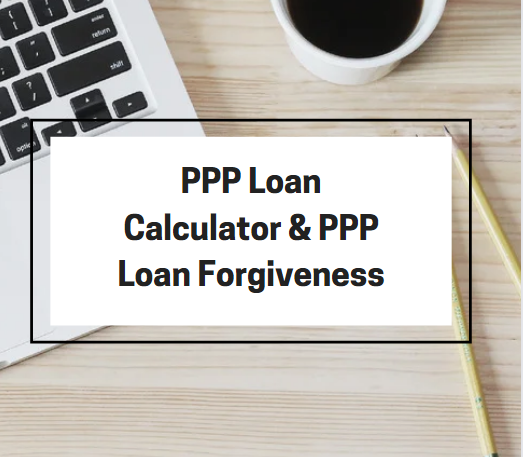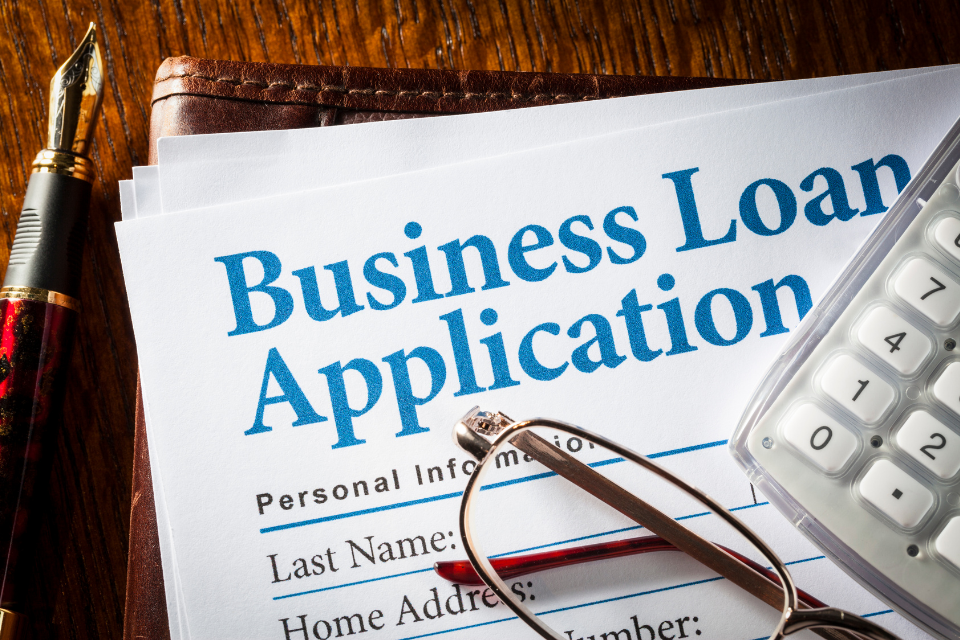Student loan debt has become a major financial burden for millions of Americans, with the total outstanding student loan debt surpassing $1.7 trillion as of September 2021.
The high cost of tuition and the increasing need for post-secondary education have led many borrowers to rely on student loans to finance their education.
However, repaying these loans can be a struggle for many borrowers, leading to financial stress and difficulties in achieving other financial goals. To address this issue, the US government has established a student loan forgiveness program to help borrowers who are struggling to repay their loans.

In this article, we will discuss the student loan forgiveness program, its eligibility criteria, and how it can provide relief to borrowers facing financial difficulties. This program offers an opportunity for borrowers to have a portion of their student loan debt forgiven based on specific criteria such as their income, employment, or military service.
Here's what we shall cover in this post:
- What is Student Loan Forgiveness?
- Eligibility Requirements for Student Loan Forgiveness
- Different Types of Student Loan Forgiveness Programs
- How to Apply for Student Loan Forgiveness?
- Pros and Cons of Student Loan Forgiveness
- Alternatives to Student Loan Forgiveness Programs
- FAQs About Student Loan Forgiveness
- Conclusion
- Key Takeaways
What is Student Loan Forgiveness?
Student loan forgiveness is a program that provides financial relief to individuals who are struggling with student loan debt. Eligible individuals can have a portion or all of their student loan debt forgiven.
- To be eligible, individuals must meet specific criteria, such as working in a particular field, having a specific type of loan, or making a certain number of payments.
- It is essential to carefully research the eligibility requirements and conditions of each student loan forgiveness program to determine if it is the right choice for your financial situation.
- It is essential to understand the potential tax implications of loan forgiveness as the forgiven debt may be considered taxable income by the IRS.
Eligibility Requirements for Student Loan Forgiveness
Here are some of the essential eligibility requirements to understand:
- Type of loan: An individual's loan plays a significant role in determining eligibility for student loan forgiveness. Some programs are only available for certain types of loans, such as direct federal loans.
- Employment: Many student loan forgiveness programs are specifically designed for individuals who work in certain fields or for certain employers. For example, public service loan forgiveness is available to individuals who work in government or non-profit organizations.
- Loan payments: Some student loan forgiveness programs require individuals to make a certain number of payments on their loans before they can apply for forgiveness. Income-driven repayment plans, for example, allow individuals to make payments based on their income and can result in loan forgiveness after a certain number of payments.
- Income: Some student loan forgiveness programs take into account an individual's income when determining eligibility. Income-driven repayment plans, for example, are designed to make payments more manageable for individuals who have a low income.
- Time: Some student loan forgiveness programs have a time limit on when individuals can apply for forgiveness. For example, public service loan forgiveness requires individuals to make 120 qualifying payments over ten years before they can apply for forgiveness.
It is essential to thoroughly research the eligibility requirements for each student loan forgiveness program before applying. Additionally, it is crucial to keep in mind that the eligibility requirements for student loan forgiveness can change, so staying informed and up-to-date on any changes that may impact your eligibility is essential.
Different Types of Student Loan Forgiveness Programs
Several different types of student loan forgiveness programs are available, each with unique eligibility requirements and conditions. Understanding the different types of student loan forgiveness programs can help individuals decide on the best option for their financial situation.
Teacher Loan Forgiveness
This program is designed for teachers who work in low-income schools or educational service agencies. Eligible teachers can have up to $17,500 of their Direct Subsidized and Unsubsidized Loans and their Direct PLUS loans forgiven. To be eligible, teachers must have taught full-time for five complete and consecutive academic years and meet other criteria.
- Eligibility Requirements: To be eligible for Teacher Loan Forgiveness, individuals must have taught full-time for five complete and consecutive academic years in a low-income school or educational service agency. The eligible loan types are Direct Subsidized and Unsubsidized Loans and Direct PLUS loans. Individuals must also meet additional criteria, such as having a valid teaching certification and not having had a loan discharged due to false certification or unauthorized payment.
- Amount of Loan Forgiveness: Eligible individuals can have up to $17,500 of their Direct Subsidized and Unsubsidized Loans and Direct PLUS loans forgiven. The exact amount of loan forgiveness will depend on the individual's loan balance and the specific terms of their loan agreement.
- Application Process: Individuals who are interested in Teacher Loan Forgiveness must complete an application and provide documentation to prove their eligibility. The application process typically involves completing a form and providing proof of employment, such as a letter from their employer or a pay stub.
- Timeframe for Loan Forgiveness: Loan forgiveness is typically granted after the individual has completed five consecutive years of teaching in a low-income school or educational service agency. The exact timeframe for loan forgiveness will depend on the specific terms of the individual's loan agreement.
- Other Considerations: It is important to note that the Teacher Loan Forgiveness program is a federal program, and the specific eligibility requirements and conditions may vary depending on the state in which the individual is teaching. Individuals considering a teaching career should research the particular programs available in their state to determine if they are eligible for Teacher Loan Forgiveness.
Public Service Loan Forgiveness
This program is available to individuals who work in government or non-profit organizations. Eligible individuals can have the remaining balance of their federal student loans forgiven after making 120 qualifying payments over ten years.
In addition to working in a qualifying organization, individuals must also have a qualifying loan and must make their payments through an income-driven repayment plan.
- Eligibility Requirements: To be eligible for PSLF, individuals must work full-time in a qualifying public service job, such as in government agencies, non-profit organizations, or schools. The eligible loan types are Direct Loans, which include Direct Subsidized and Unsubsidized Loans and Direct Consolidation Loans. Individuals must also make payments on their loans for a specified period of time, typically ten years.
- Amount of Loan Forgiveness: Eligible individuals may have the entire remaining balance of their Direct Loans forgiven. The exact amount of loan forgiveness will depend on the individual's loan balance and the specific terms of their loan agreement.
- Application Process: Individuals who are interested in PSLF must complete an application and provide documentation to prove their eligibility. The application process typically involves completing a form and providing proof of employment, such as a letter from their employer or a pay stub.
- Timeframe for Loan Forgiveness: Loan forgiveness is typically granted after the individual has made 120 qualifying payments while working in a qualifying public service job. The exact timeframe for loan forgiveness will depend on the specific terms of the individual's loan agreement.
Income-Driven Repayment Plans
These plans allow individuals to make payments based on their income, which can make loan repayment more manageable. Depending on the plan, the remaining balance of the loan may be forgiven after a certain number of payments have been made.
There are several different types of income-driven repayment plans available, including Income-Based Repayment (IBR), Pay As You Earn (PAYE), and Revised Pay As You Earn (REPAYE).
- Eligibility Requirements: To be eligible for an IDRP, individuals must have a partial financial hardship, meaning their monthly loan payment must be higher than what they could afford based on their income and other factors. The exact eligibility requirements for each IDRP vary, and individuals should research the specific requirements for the plan they are interested in.
- Loan Forgiveness: In some cases, individuals who make payments under an IDRP for a specified period of time may be eligible for loan forgiveness. The exact amount of loan forgiveness will depend on the individual's loan balance and the specific terms of their loan agreement.
- Advantages of IDRPs: The main advantage of IDRPs is that they provide a more manageable monthly payment option for individuals who are struggling to make their student loan payments. They also offer the potential for loan forgiveness, which can help individuals achieve their financial goals and become debt-free.
Military Service Loan Forgiveness
This program provides financial relief to individuals who have served in the military. Eligible individuals can have a portion or all of their student loan debt forgiven, depending on the loan type and the service length.
Military service loan forgiveness is available to individuals who have served in the Army, Navy, Air Force, National Guard, and Coast Guard.
- Eligibility: To be eligible for Military Service Loan Forgiveness, you must be an active-duty service member or a veteran. Additionally, you must have taken out your student loans for education before you entered military service.
- Loan Types: Military Service Loan Forgiveness can be used for most types of federal student loans, including Direct Loans, Stafford Loans, and Perkins Loans.
- Amount of Forgiveness: The amount of forgiveness you can receive through Military Service Loan Forgiveness varies depending on your branch of military service and the length of your service. Some programs provide up to 100% loan forgiveness, while others offer only partial forgiveness.
- Service Requirements: To receive loan forgiveness through Military Service Loan Forgiveness, you must meet specific service requirements. This typically includes serving in an active-duty capacity for a set period of time and meeting other eligibility criteria.
State-Sponsored Loan Repayment Assistance Programs
Many states have programs that provide student loan repayment assistance to individuals who work in certain fields or for certain employers. For example, some states offer loan repayment assistance to doctors who work in underserved areas. It is vital to research the specific programs available in your state to determine if you are eligible.
- The eligibility criteria and amount of support vary by state, but these programs often target certain professions, such as teachers, healthcare workers, and public servants.
- To be eligible for state-sponsored loan repayment assistance, borrowers typically need to live and work in the state and meet certain income requirements.
- The application process for these programs also varies by state, but many require borrowers to submit an application and provide proof of their income, employment, and student loan debt.
- State-sponsored loan repayment assistance programs can help lower monthly student loan payments and provide much-needed relief for borrowers who are struggling to repay their loans.
Employer-Sponsored Loan Repayment Assistance Programs
Some employers offer loan repayment assistance as part of their employee benefits package. Employers may provide a certain amount of money each year to help repay student loans or offer loan repayment assistance as a one-time benefit.
It is essential to research the specific programs available through your employer to determine if loan repayment assistance is an option.
- Participating in an employer-sponsored loan repayment program can lower monthly payments and provide much-needed relief for employees who are struggling to repay their student loans.
- These programs can also be a good option for those who are not eligible for federal student loan forgiveness programs or who need additional support.
- Employers who offer loan repayment assistance may also offer other financial wellness benefits, such as retirement savings plans or financial education resources.
How to Apply for Student Loan Forgiveness?
There are several ways to apply for student loan forgiveness. This section will outline the steps for applying for student loan forgiveness.
Determine Eligibility
Before applying for student loan forgiveness, it is important to determine if you are eligible for a particular program. Eligibility requirements vary by program, and you may need to meet certain criteria, such as working in a specific field, serving in the military, or having a certain income.
Research Available Programs
Once you have determined that you are eligible, you will want to research the various student loan forgiveness programs available to you. There are a variety of federal and state programs, as well as programs offered by some employers.
Gather Required Documentation
Each student loan forgiveness program will have different requirements and documentation that must be submitted with your application. Ensure you have all the necessary documents and information before starting the application process. This can include pay stubs, tax returns, and proof of employment.
Fill Out the Application
Once you have all the necessary documentation, you can start filling out the application for student loan forgiveness. Depending on the program, this may be done online or through the mail. Make sure to read the instructions carefully and provide all the information that is requested.
Submit Application and Required Documentation
After filling out the application, it is important to double-check that all required documentation is included and that the application is complete. Submit the application and supporting documents as instructed, whether it be through the mail or online.
Wait for Approval
Once the application has been submitted, it can take several months to hear back about approval or denial. It is important to continue making payments on your student loans during this time unless you have been advised otherwise by the loan forgiveness program.
Maintain Eligibility Requirements
If your application is approved, it is important to maintain the eligibility requirements for the program. This can include continuing to work in a specific field, having a certain income, or making payments according to an income-driven repayment plan.
Pros and Cons of Student Loan Forgiveness
Pros of Student Loan Forgiveness
- Reduce Loan Burden: The primary benefit of student loan forgiveness is that it relieves individuals struggling with the burden of student loan debt. It can help reduce the total amount of money they owe, making it easier for them to manage their finances and get on the path to financial stability.
- Reduced Monthly Payments: Forgiveness programs offering income-driven repayment plans can reduce the monthly payment amount, making it easier for borrowers to meet their monthly expenses. This can be especially helpful for those who are struggling to make ends meet because of the high cost of student loans.
- Career Advancement: Many student loan forgiveness programs are specifically designed for individuals working in specific fields, such as education, government, and non-profit organizations. This can make it easier for individuals to advance in their careers, as they will have less debt to repay and can focus on building their professional skills.
- Encourages Public Service: Student loan forgiveness programs for individuals working in the public sector, such as the military or non-profit organizations, can encourage individuals to choose careers that benefit the public. This can be beneficial for both the individuals and the communities they serve, as they will be dedicating their careers to serving others.
- Tax Benefits: Forgiven student loan debt is considered taxable income by the IRS. However, the CARES Act provides tax-free student loan forgiveness through December 31, 2020.
- Improved Mental Health: Carrying a large amount of student loan debt can be stressful, which can affect a person's mental health. Student loan forgiveness can provide much-needed relief, helping individuals to reduce the stress and anxiety they feel about their finances.
- Higher Standard of Living: By reducing the amount of money owed on student loans, individuals may have more disposable income each month, which can help improve their standard of living. They can use the extra money to save for the future, invest in their education, or enjoy their lives.
Cons of Student Loan Forgiveness
- Complex eligibility requirements: To be eligible for loan forgiveness, you often have to meet certain requirements, such as working in a specific field, making payments for a certain number of years, or having a certain income level. These requirements can be complex and difficult to understand, making it difficult for many borrowers to determine if they qualify for forgiveness.
- Lengthy application process; Even if you are eligible for loan forgiveness, the process of applying for it can be long and cumbersome. You may need to provide extensive documentation and fill out numerous forms to complete your application.
- Uncertainty about future funding: The future of loan forgiveness programs is still being determined, as the government often funds them. If funding for these programs is reduced or eliminated, it could impact your ability to receive loan forgiveness.
- Tax implications; Forgiven student loan debt may be considered taxable income by the IRS, which means that you may have to pay taxes on the amount of your loan that was forgiven. This could result in a significant tax bill that you were not anticipating.
- Repayment may not be complete: Even if you are approved for loan forgiveness, your debt may not be completely forgiven. Some programs only forgive a portion of your debt, leaving you with a remaining balance to repay.
- May not lower monthly payments: If you are eligible for loan forgiveness, you may still be required to pay until your forgiveness application is approved. This means that your monthly payments may not be lower even if you are in the process of seeking forgiveness.
Alternatives to Student Loan Forgiveness Programs
Student loan forgiveness programs can be a great option for those who meet the eligibility requirements, but it is not the only solution for managing student debt. Here are some alternatives to consider:
- Refinancing: Refinancing your student loans means taking out a new loan at a lower interest rate to pay off your existing loans. This can lower your monthly payments and potentially save you thousands of dollars in interest over the life of the loan.
- Graduated Repayment Plan: This plan starts with lower payments and gradually increases over time, giving you a chance to adjust your budget as your income grows.
- Pay As You Earn (PAYE) Plan: This plan limits your monthly payments to 10% of your discretionary income and provides loan forgiveness after 20 years.
- Work-Study Jobs: Work-study programs provide students with part-time jobs to help pay for their education.
- Scholarships and Grants: Scholarships and grants do not have to be repaid, making them a great way to finance your education without incurring debt.
- Part-Time Work: Working part-time while in school can help offset the cost of tuition and reduce the amount of student debt you need to take on.
- Budgeting: Careful budgeting can help you manage your student loan debt and ensure you have enough money for other expenses.
Future of Student Loan Forgiveness
The future of student loan forgiveness is uncertain as government policies and economic conditions greatly impact it. However, a few trends and factors are likely to shape its future.
- Expansion of existing programs
With the growing student loan debt crisis, existing student loan forgiveness programs may be expanded to help more borrowers. This may involve increasing the amount of debt that can be forgiven, lowering the eligibility requirements, or extending the repayment period.
- New programs
In response to the student loan debt crisis, new student loan forgiveness programs may be introduced to help borrowers. These programs could target specific groups, such as low-income borrowers or those working in public service or non-profit organizations.
- Increased scrutiny
With the growing number of student loan borrowers seeking loan forgiveness, there is a likelihood of increased scrutiny of these programs by the government and the media. This could lead to greater transparency and accountability in the administration of these programs.
- Changes in political climate
The political climate can greatly impact the future of student loan forgiveness. Political changes can lead to new policies and programs being introduced or existing programs being modified or discontinued.
- Economic conditions
The future of student loan forgiveness is also tied to the economy. A strong economy could result in more funds being available for loan forgiveness programs, while a weak economy could result in less funding or even discontinuing these programs.
- Private sector involvement
Private sector companies and non-profit organizations may also play a role in the future of student loan forgiveness. They may offer employee student loan repayment assistance or other benefits, which could help borrowers manage their debt and repay their loans more quickly.
- Technological advancements
Advances in technology, such as the development of new financial management tools and mobile apps, may also impact the future of student loan forgiveness. These tools could help borrowers better manage their debt and make it easier to find and apply for loan forgiveness programs.
FAQs About Student Loan Forgiveness
Que 1: Is student loan forgiveness taxed?
Ans. In some cases, student loan forgiveness may be considered taxable income. Borrowers should consult with a tax professional to understand the tax implications of student loan forgiveness.
Que 2: Can student loan forgiveness be canceled or revoked?
Ans. Yes, student loan forgiveness can be canceled or revoked if a borrower fails to meet the program's requirements, such as continuing to work in a specific field or making payments on time.
Que 3: How will student loan forgiveness impact my credit score?
Ans. Student loan forgiveness can impact your credit score, as it may indicate that you have defaulted on your loans.
Que 4: What happens to my co-signer if my student loans are forgiven?
Ans. If your student loans are forgiven, your co-signer may still be responsible for repaying the loans if they have not been released from their obligation.
How can Deskera Help You?
Deskera's unified financial planning tools help investors plan and track their investments more effectively. It can help investors make more accurate and timely decisions.
Deskera Books can assist you in automating your accounting and lowering business risks. Deskera simplifies invoice creation by automating many other procedures, reducing your team's administrative workload.
Deskera also offers a suite of integrated applications to help businesses manage their finances, inventory, and operations. Deskera also provides other business services and software such as human resources management (Deskera People), CRM (Deskera CRM), and enterprise resource planning (Deskera ERP). These could be crucial in assisting short sellers in staying on top of their businesses and making better decisions.
Conclusion
Student loan forgiveness has recently become a hotly debated issue, with millions of Americans struggling to pay off their student loans. The growing student loan debt crisis has prompted many policymakers to call for student loan forgiveness to help borrowers get back on their feet.
However, there is still much debate over the best way to address the student loan crisis. Some advocate for blanket student loan forgiveness, while others argue that this would not be the most effective solution and would likely result in unintended consequences.
Ultimately, the solution to the student loan crisis will require a combination of measures, including loan forgiveness, debt restructuring, and increased access to affordable education.
Addressing the student loan crisis will require a collective effort from all stakeholders, including policymakers, educators, borrowers, and the lending industry. This will not only help to alleviate the burden of student loan debt, but it will also help to promote economic growth and stability for generations to come.
Key Takeaways
- Student loan forgiveness programs are government-sponsored initiatives aimed at helping borrowers who are struggling with student loan debt.
- These programs typically relieve borrowers by forgiving a portion of their debt or reducing their monthly payments.
- Eligibility for student loan forgiveness programs typically depends on factors such as income, employment, and type of loan.
- Some of the most well-known student loan forgiveness programs include the Public Service Loan Forgiveness (PSLF) program and the Income-Driven Repayment (IDR) plans.
- The terms and conditions of student loan forgiveness programs can be complex, and borrowers need to understand the requirements and any potential drawbacks.
- Some common drawbacks of student loan forgiveness programs include the time it takes to receive loan forgiveness and the potential for loan balance increases due to accruing interest.
Related Articles













